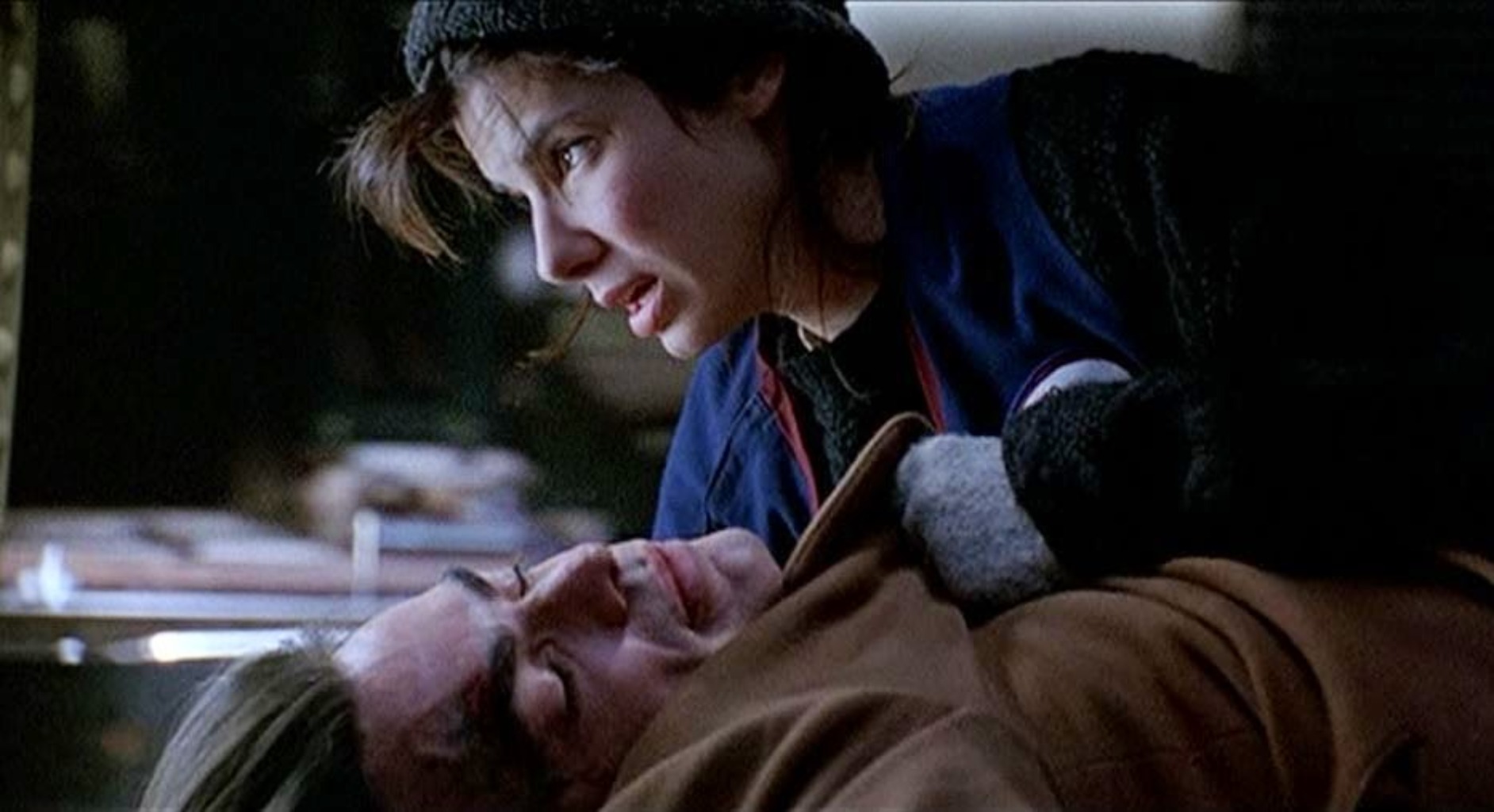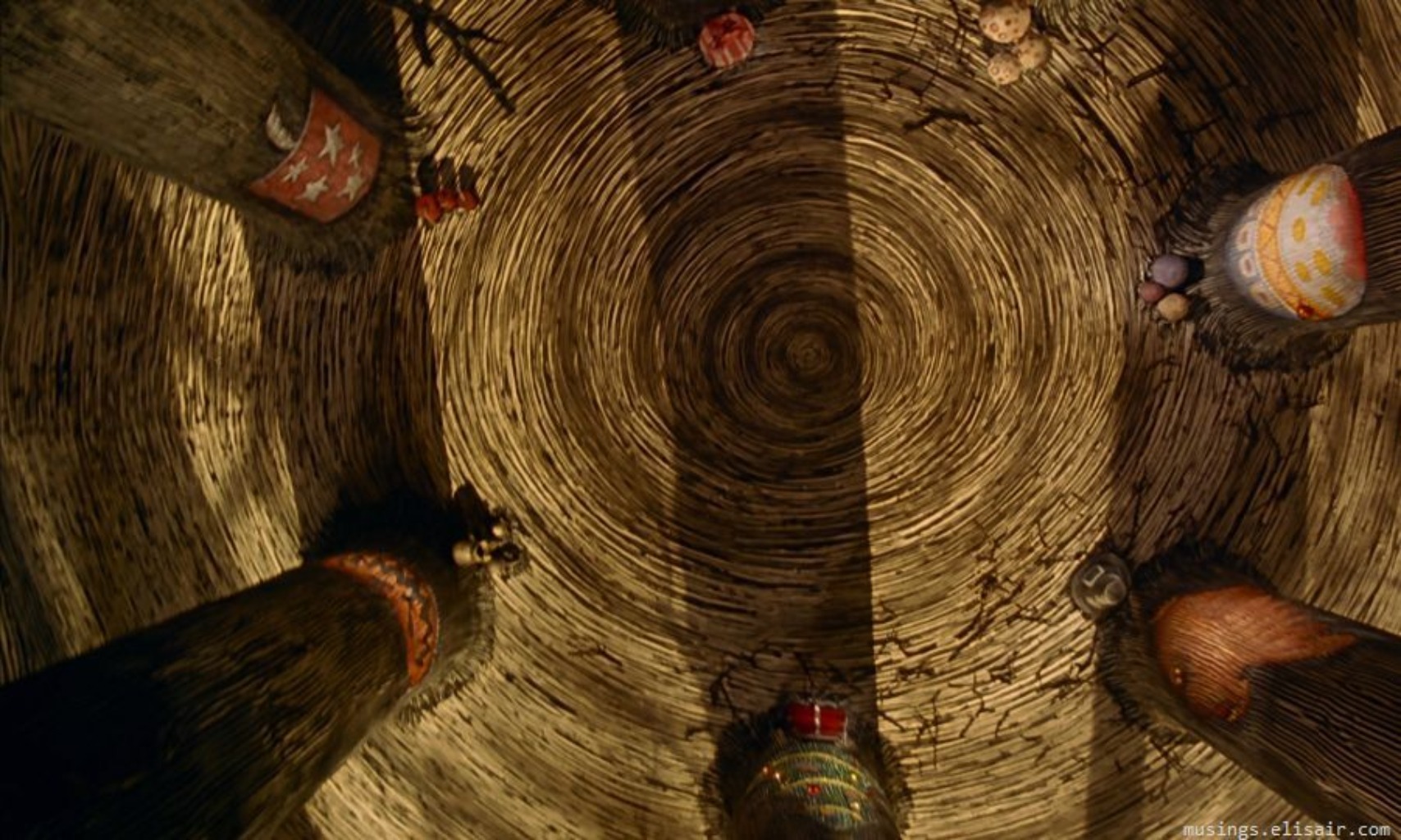I’ve done a few different installments of this ongoing series about TV and movies that you can study to improve your writing. With the holidays swiftly approaching, I thought it would be fun to do a special edition all about Christmas movies.
As enjoyable as they can be, Christmas movies don’t always have the reputation for being particularly good films. Many of them are a bit of a cash grab—studios know viewers will be looking for new holiday movies to watch during the time off from work and school and will settle for something of lesser quality.
But that doesn’t mean that there aren’t plenty of truly great Christmas movies out there. It’s a time of year that celebrates togetherness, the connections we have to those we love, and sometimes explosive action (more on that below). Here are three Christmas movies that can teach you a lot about how to improve your writing, whether you’re writing your own holiday story or something else entirely.

The Love Triangle: While You Were Sleeping
Where to watch it: Tubi
After her breakthrough turn in Speed in 1994, While You Were Sleeping helped to cement Sandra Bullock’s place as one of Hollywood’s favorite leading ladies of romantic comedies. She brings so much vulnerability to the role of Lucy that the viewer can’t help but feel for her as she makes one terrible (yet relatable) mistake after another. One of the film’s greatest strengths is the love triangle at its core. This isn’t exactly a typical love triangle, considering that one of the points of the triangle is in a coma for most of the film, and he and Lucy were practically strangers before his train accident. But that’s actually a big part of why this love triangle works so well.
The movie begins with several shots of Chicago that have a gray-blue look to them. Then we shift to a warm, orange view of a memory that Lucy has of spending time with her father and dreaming of exciting adventures. These memories are full of vibrant colors and sunlight—a stark difference from her current lonely existence working as a Chicago Transit Authority token collector. Then similar colors are used the first time Lucy sees Peter, a handsome, well-dressed man who comes by her booth each day. It seems like the plot will build to familiar romantic comedy territory—she and Peter will fall in love and he’ll take her away for her humdrum life.

Instead, Peter gets pushed onto the train tracks on Christmas day, and though Lucy is able to save his life, he ends up in a coma. At the hospital, no one will let Lucy see Peter because she’s not family, so as a result of a bit of a misunderstanding, a nurse tells the doctor that Lucy is Peter’s fiancée. This leads to Peter’s whole, adorable family believing this lie and taking Lucy in as one of their own over the holidays. Lucy doesn’t tell the truth out of concern for Peter’s grandmother and her weak heart, but clearly enjoys being part of a family again as well.
She also falls in love with Peter’s brother Jack, who turns out to be far better suited to her than arrogant Peter. Jack’s character is developed quickly and efficiently—he’s a gifted carpenter who wants out of his father’s furniture business and doesn’t know how to tell him. Like Lucy, he thirsts for more out of life. The crackling tension between Lucy and Jack is all the more effective since Jack thinks that Lucy is engaged to his brother, and Lucy can’t figure out how to escape the tangle of lies so she can tell Jack she isn’t.
This is a heartfelt love story in more ways than one—it features a fantastic love triangle, and also shows how Lucy falls in love with Peter and Jack’s entire family. It’s a great one to study for techniques on both building a love triangle and compelling characters.

Worldbuilding: The Nightmare Before Christmas
Where to watch it: Disney Plus
Disney was initially very dubious about The Nightmare Before Christmas’ chances at success. They were afraid that it would be “too dark and too scary” for their usual audience. But nearly 30 years later, the film is an iconic piece of pop culture. You see Jack Skellington t-shirts, tattoos, and bumper stickers everywhere. The skeletal Pumpkin King is also one of the only decorations that families can put up at Halloween and leave up all the way through the Christmas season.
This highly original film mashes together Halloween and Christmas into a whimsical, creepy romp that is both hilarious and terrifying. It shows that kids can handle dark stories—in fact, they often appreciate them even more than adults do. It’s also a film that appeals broadly to audiences of all ages. I watched it often growing up, and still enjoy it every bit as much now.

The Nightmare Before Christmas starts with a shot of the Holiday Doors—doors embedded into trees that lead to the worlds of each major holiday (Halloween, Thanksgiving, Christmas, Easter, etc.). We step through into Halloween Town, a ghoulish place full of ghosts, vampires, and other malevolent creatures. Right off the bat, this film introduces its imaginative premise and what makes its world unique.
Don’t be afraid to think outside of the box when it comes to your worldbuilding—think so far outside the box that you can’t even see it anymore. People may tell you that your idea is too strange and won’t work, but The Nightmare Before Christmas shows that some of the greatest stories are ones that no one thought would succeed.

Stakes: Die Hard
Where to watch it: Peacock
I know there’s been some debate on this topic, but in my opinion, Die Hard is most definitely a Christmas movie. Not only does it take place during an office holiday party on Christmas Eve, but it centers around the narrative of a man returning to his family for Christmas. It even features a greedy villain who cares about nothing but money, just like Old Man Potter in It’s a Wonderful Life (another excellent Christmas film whose storytelling techniques we can maybe discuss next year).
I’m not sure there’s another film that handles the stakes of its plot as well as Die Hard. In any great story, it is essential that the protagonist has a goal, and they must face obstacles in order to achieve that goal. In the movie, John McLane’s goal is made clear immediately. McClane gets off a plane with a large teddy bear, then we see the Nakatomi Corporation having its annual Christmas party. So we know that McClane has arrived at his destination to give a child (likely his child) a gift. A Nakatomi employee named Holly goes to her office where she calls her daughter, and a picture on her desk reveals her posing with McClane and two children. The daughter asks about her father and if he’s coming home. When speaking to the children’s nanny, Holly mentions making up the spare bedroom for John, then flips the photo of him down on the desk.
In just the first five minutes, Die Hard sets up so much. We learn that McClane is a cop who flew on a plane to see his family for Christmas. The fact that Holly wants him to stay in a spare bedroom and what she does to the photo is evidence of some sort of estrangement, and how much his daughter misses him shows that he has probably been gone for some time. McClane’s ensuing conversation with his limo driver reveals even more: his wife has been living in California for six months working at a new, fancy job (hence the limo to pick him up) while McClane refused to leave New York after 11 years as a cop there. Now we know his goal: He screwed up, and now he wants to reconcile with his wife and return to his family.

Next come the obstacles. And there are a lot of them. First, upon arrival at the party, McLane learns that his wife has started using her maiden name. And though the two have a nice moment while McLane gets washed up in her office, they quickly get into a fight before Holly has to go back to the party. Then things get serious. Terrorist Hans Gruber and his men show up and take the employees hostage. Meanwhile, McClane is barefoot in Holly’s office making fists with his feet—a technique recommended to him by his seatmate on the plane to make him feel better after flying—and looking at wallet photos of his wife and children. So when he hears gunshots, he’s not wearing his shoes or his shirt, and yet it’s up to him (the only armed person apart from the terrorists) to save the day.
Taking a highly vulnerable man and putting him up against seemingly impossible odds is so much more effective than doing so with a godlike hero with zero flaws. Despite being an action thriller, Die Hard has an emotional core that makes every escalation of stakes pack a bigger punch.
Christmas movies may not seem like the most sophisticated fare, but you can learn more about writing from any story, as long as it’s a good one. Watching these films at this time of year will allow you to study up on storytelling techniques while celebrating the holiday season at the same time.